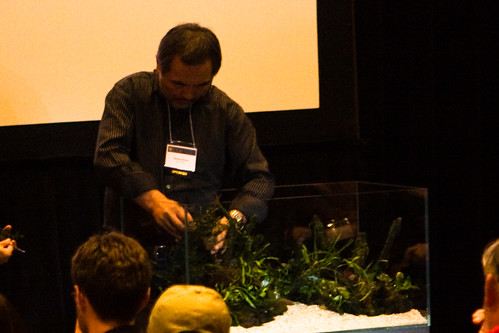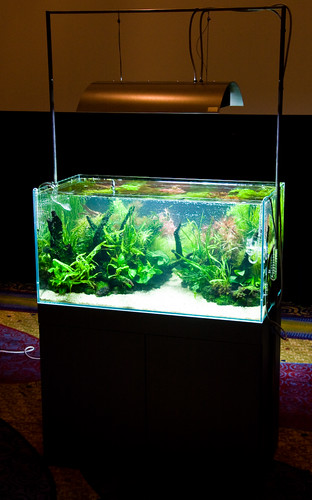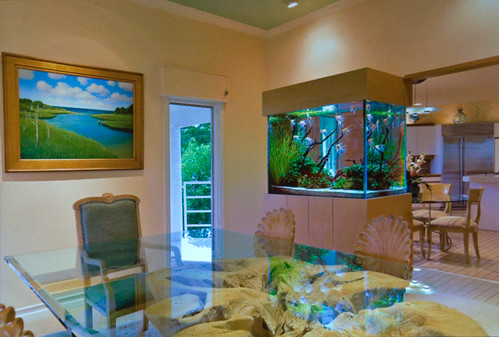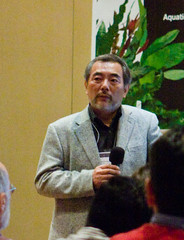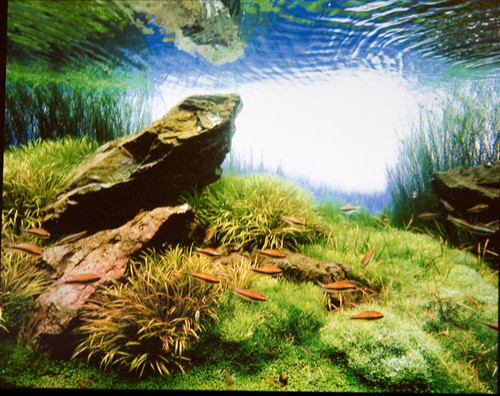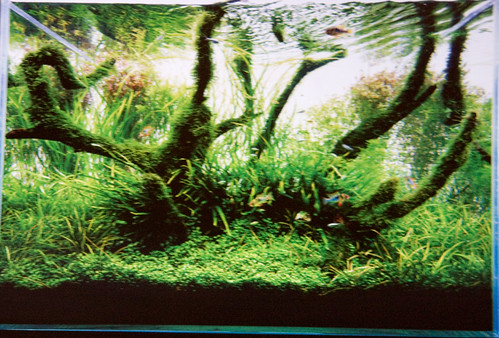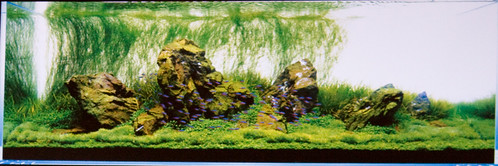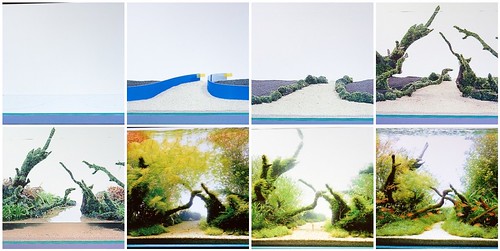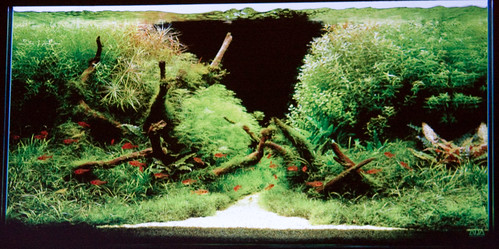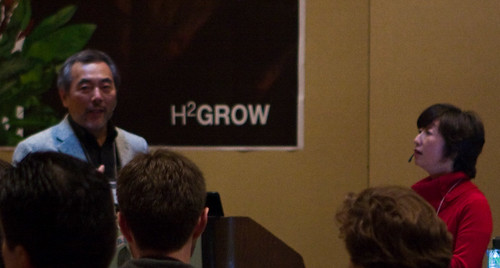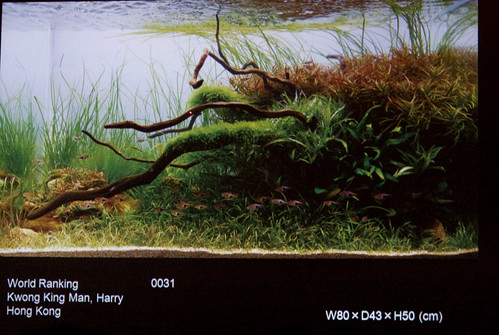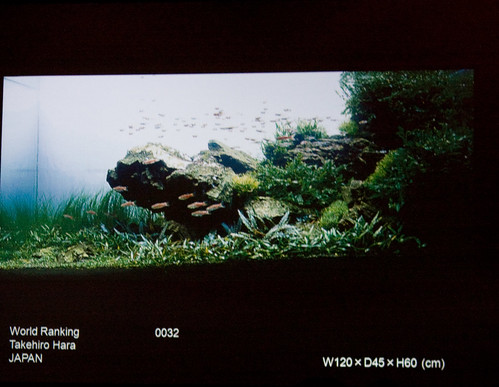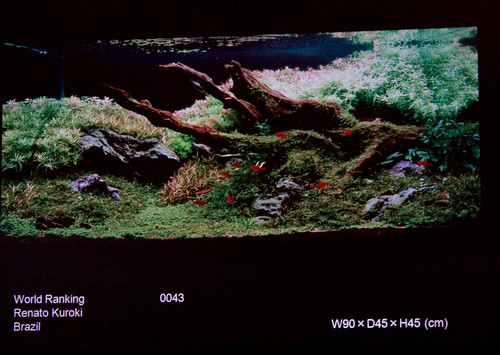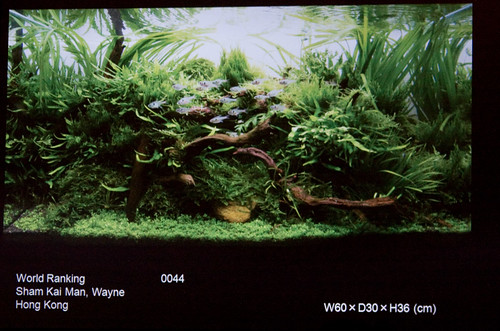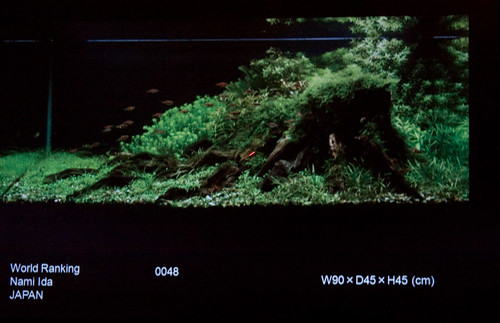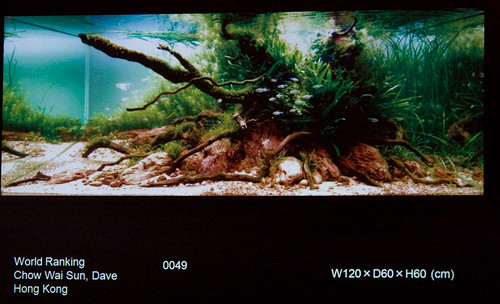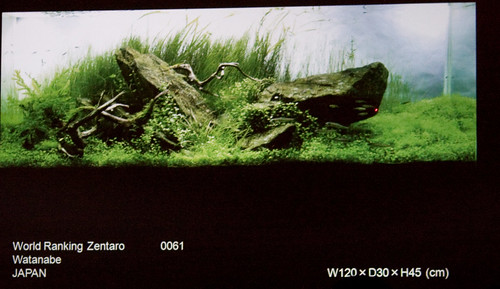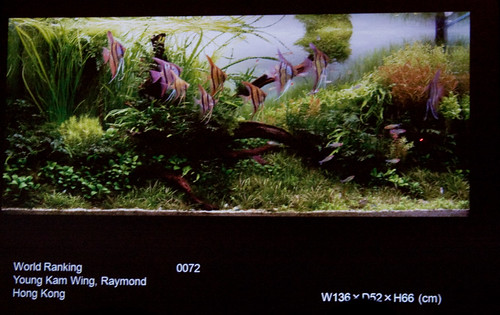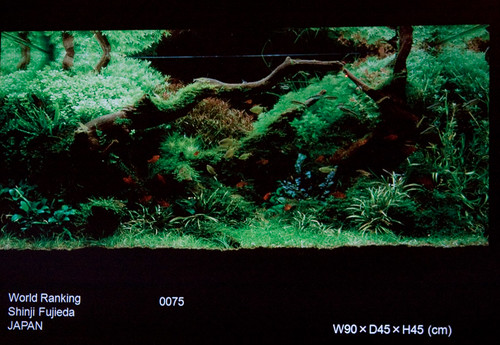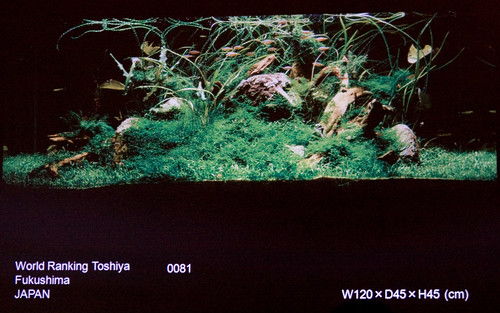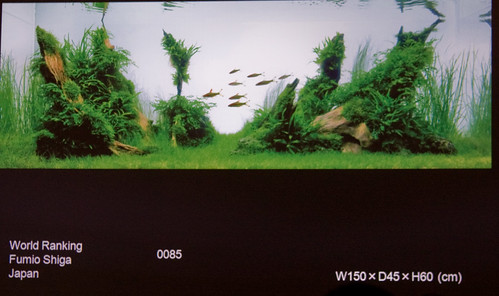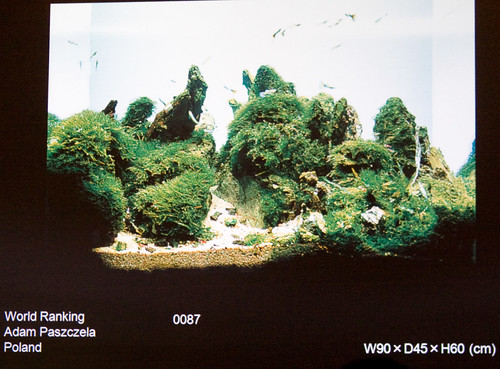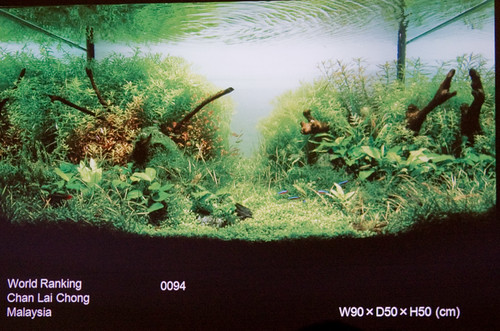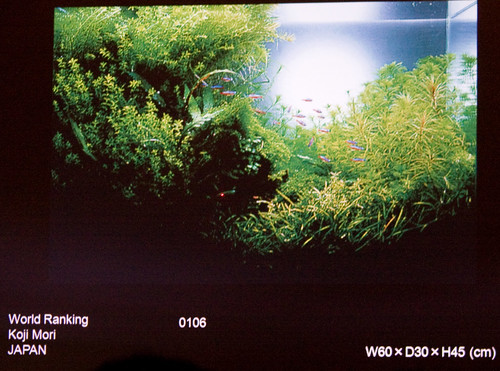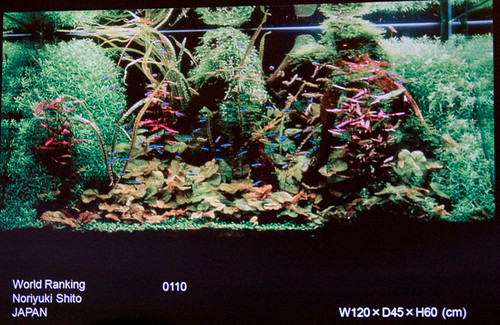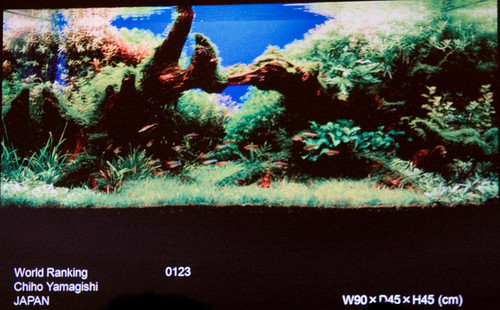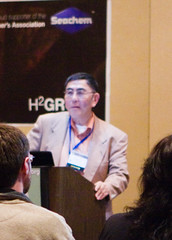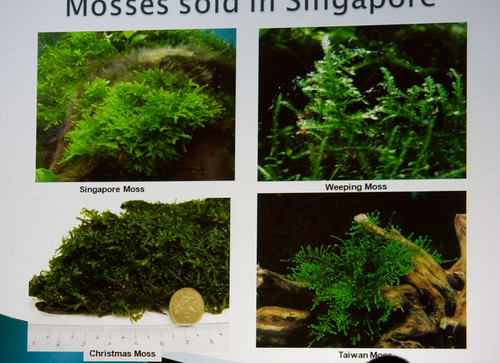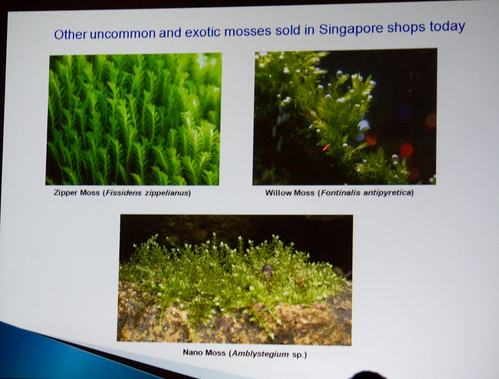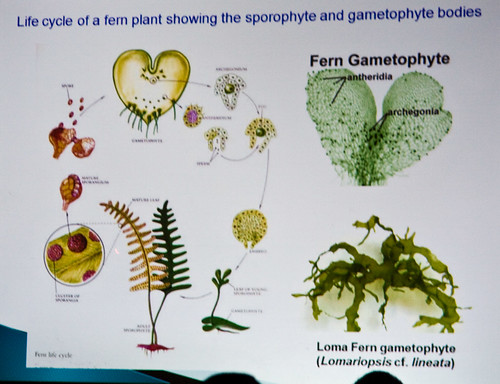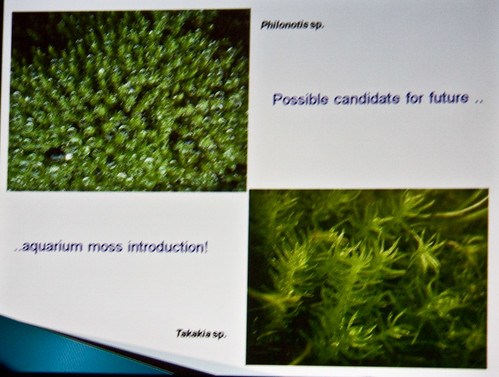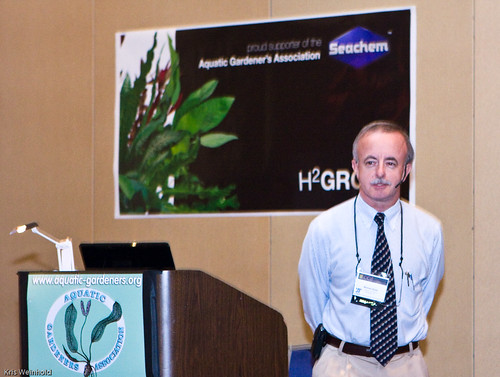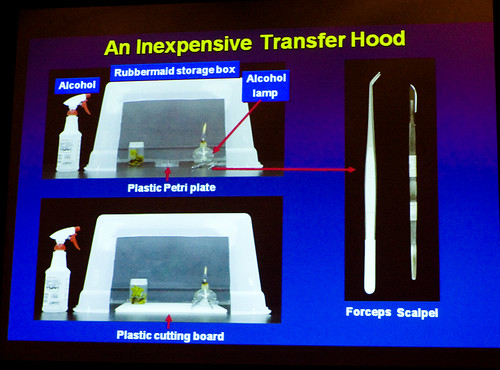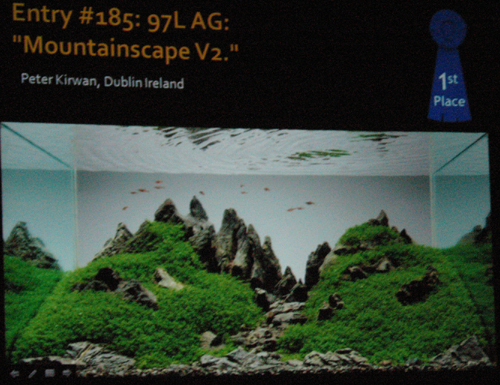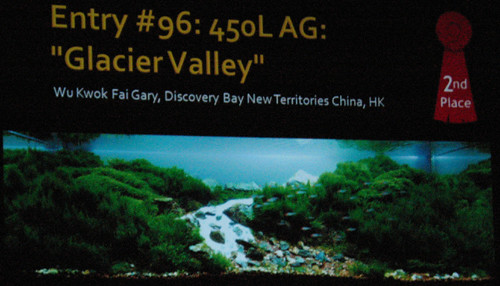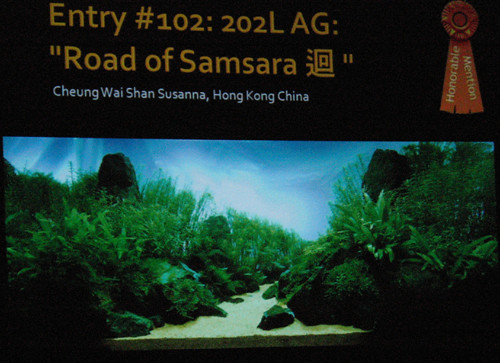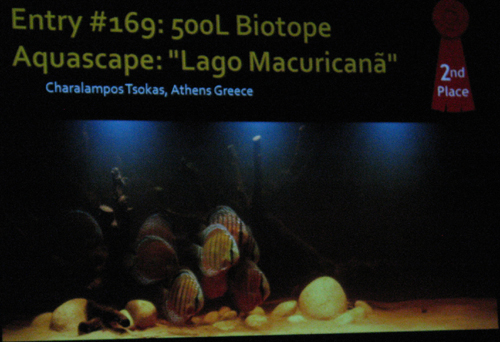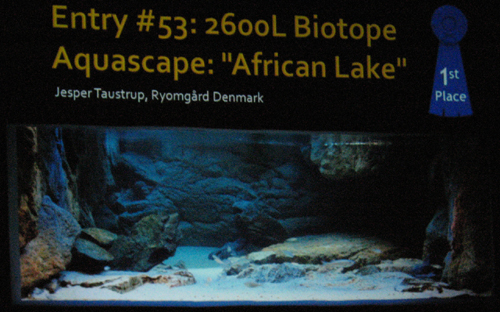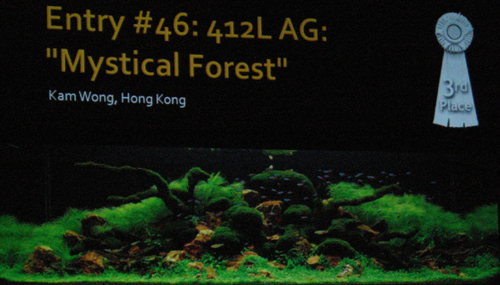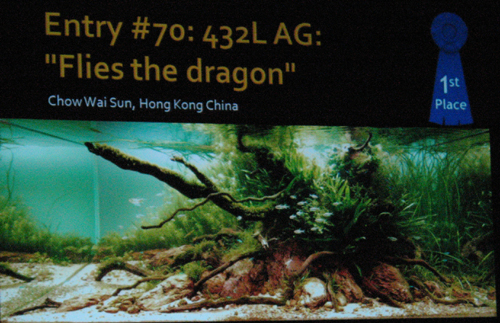AGA 2008: Takashi Amano: Aquascaping Demo
November 19th, 2008Saturday afternoon at the 2008 Aquatic Gardener’s Association Convention, Takashi Amano setup a beautiful ADA 90P aquarium from start to finish to demonstrate how to properly design an aquascape. With many helpers at hand, and tables full of rocks, wood, substrate, and plants, he began by segmenting with poster-board the floor of the aquarium into bright sand and aquasoil sections.
He then added the substrate, and positioned moss-covered-rocks along the line between the two types of substrate. After positioning the driftwood, he began positioning ferns and Anubias into the hardscape. One thing with Mr. Amano, is that he plants incredibly densely, so that when he’s done, it looks like a near finished aquascape. (Often times hobbyists don’t have the luxury of having that many plants available to scape with, and have to grow them out within the aquascape.)
Once the more static plants were in place, Amano partially filled up the tank with water, and began planting the stem and other background plants. Again, he planted very densely, so that it would only require a couple trims before the aquascape was completely full and lush.
After filling up the tank, and allowing the water to clear, below is his finished scape. It’s amazing what he was able to pull off in just about an hour. Beautiful!

